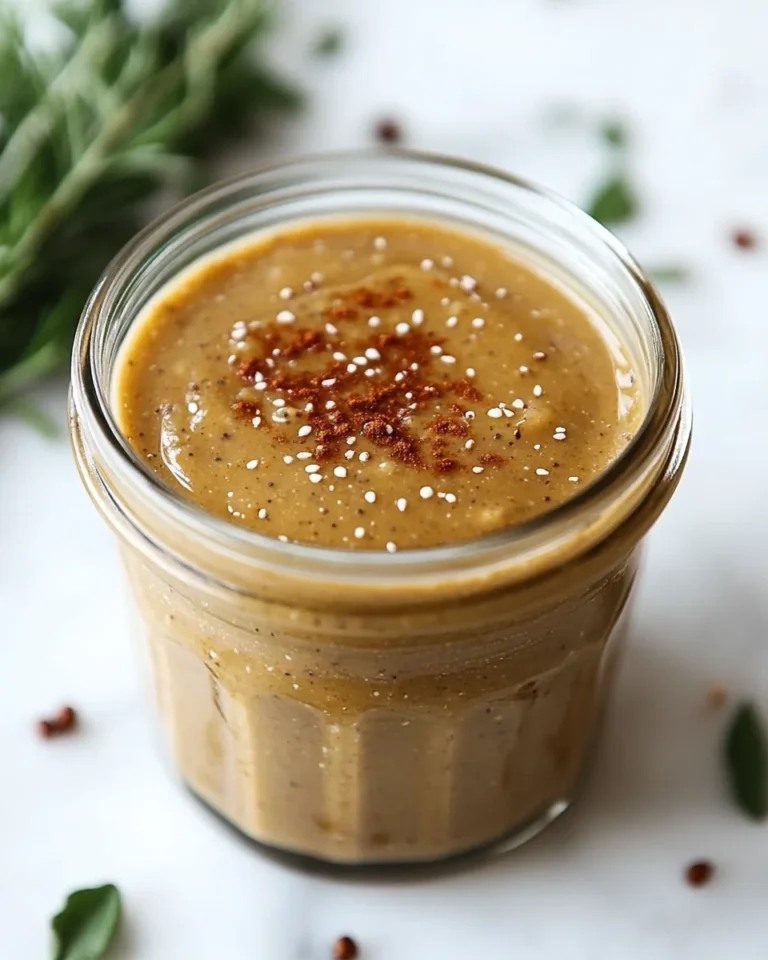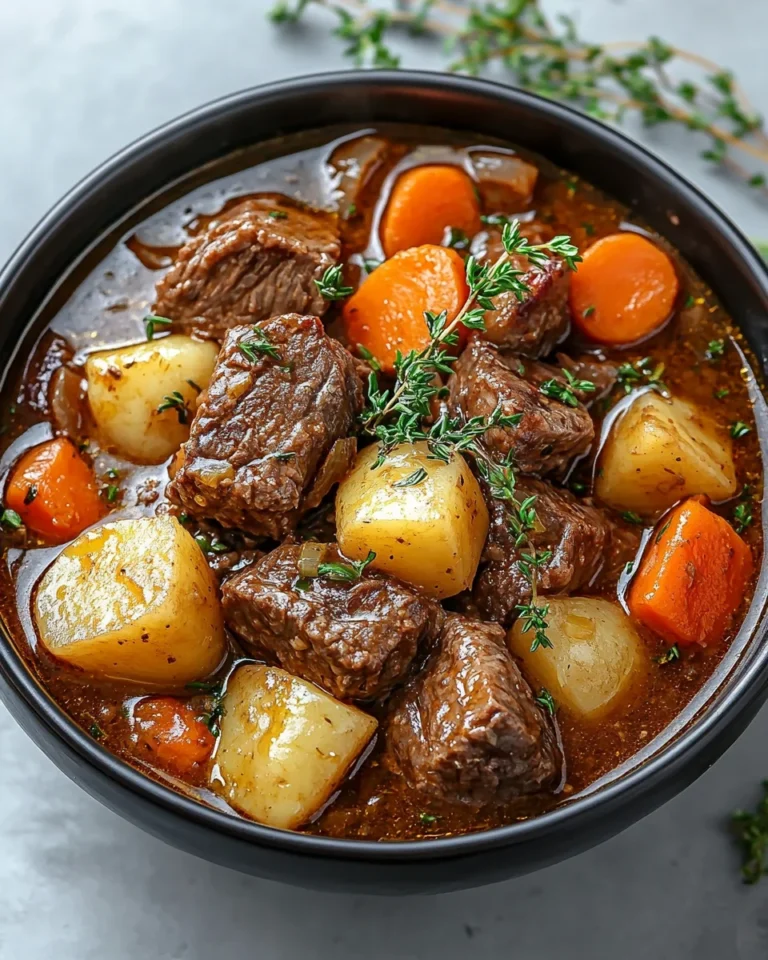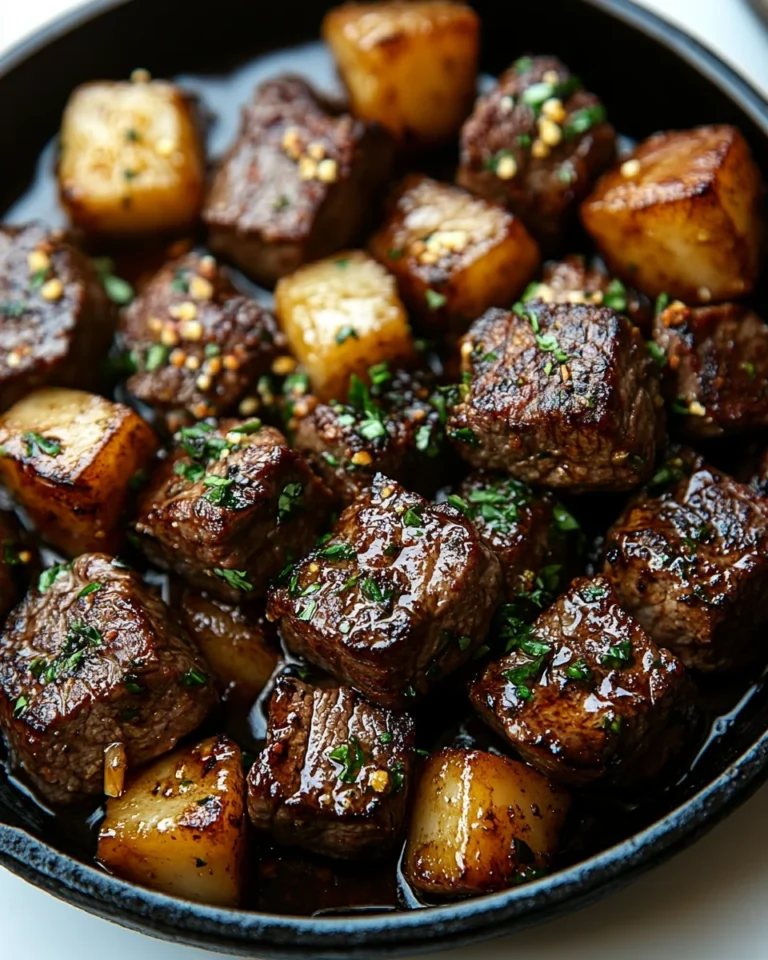Panzanella
Panzanella is a classic Italian salad that showcases the essence of summer with its vibrant ingredients and rustic charm. Originating from the Tuscan region, this dish was traditionally created as a way to utilize stale bread, combining it with ripe, juicy tomatoes and fresh vegetables, all dressed in a light vinaigrette. The beauty of Panzanella lies not only in its simple and satisfying flavors but also in its versatility. The bread soaks up the juices from the tomatoes and dressing, creating a delightful contrast in textures. With the inclusion of seasonal produce, Panzanella transforms into a celebration of freshness and flavor that can elevate any meal. Whether served as a side dish, a light main course, or a picnic favorite, this salad captures the essence of Italian cuisine, making it a beloved recipe around the world. The combination of ingredients can be easily adjusted to suit personal tastes or the season, ensuring that every bite is filled with a burst of flavor. In this article, you will learn how to prepare a traditional Panzanella that is sure to impress your family and friends.
Why You’ll Love This Recipe?
There are several reasons why Panzanella stands out as a favorite among salad lovers. First and foremost is its incredible flavor profile. The dish harmonizes the sweetness of ripe tomatoes with the tanginess of a light vinaigrette, while the bread adds a hearty element that makes it filling and satisfying. Each bite is a celebration of fresh ingredients, making it a perfect choice for warm weather dining.
Secondly, the preparation of Panzanella is remarkably easy. With minimal cooking required, the focus is on assembling fresh produce and quality bread. This means you can whip up a delicious dish in no time, making it an ideal choice for busy weeknights or impromptu gatherings.
Additionally, Panzanella is visually stunning. The vibrant colors of the tomatoes, cucumbers, and herbs create an eye-catching presentation that can impress even the most discerning guests. The rustic appeal of the torn bread pieces adds a charming, homemade touch that elevates the overall experience.
Lastly, Panzanella is incredibly versatile. You can easily customize it with your favorite ingredients or whatever you have on hand, making it a fantastic way to reduce food waste while enjoying a delicious meal. This adaptability ensures that you can enjoy Panzanella throughout the seasons, making it a staple in your recipe repertoire.
Ingredients:
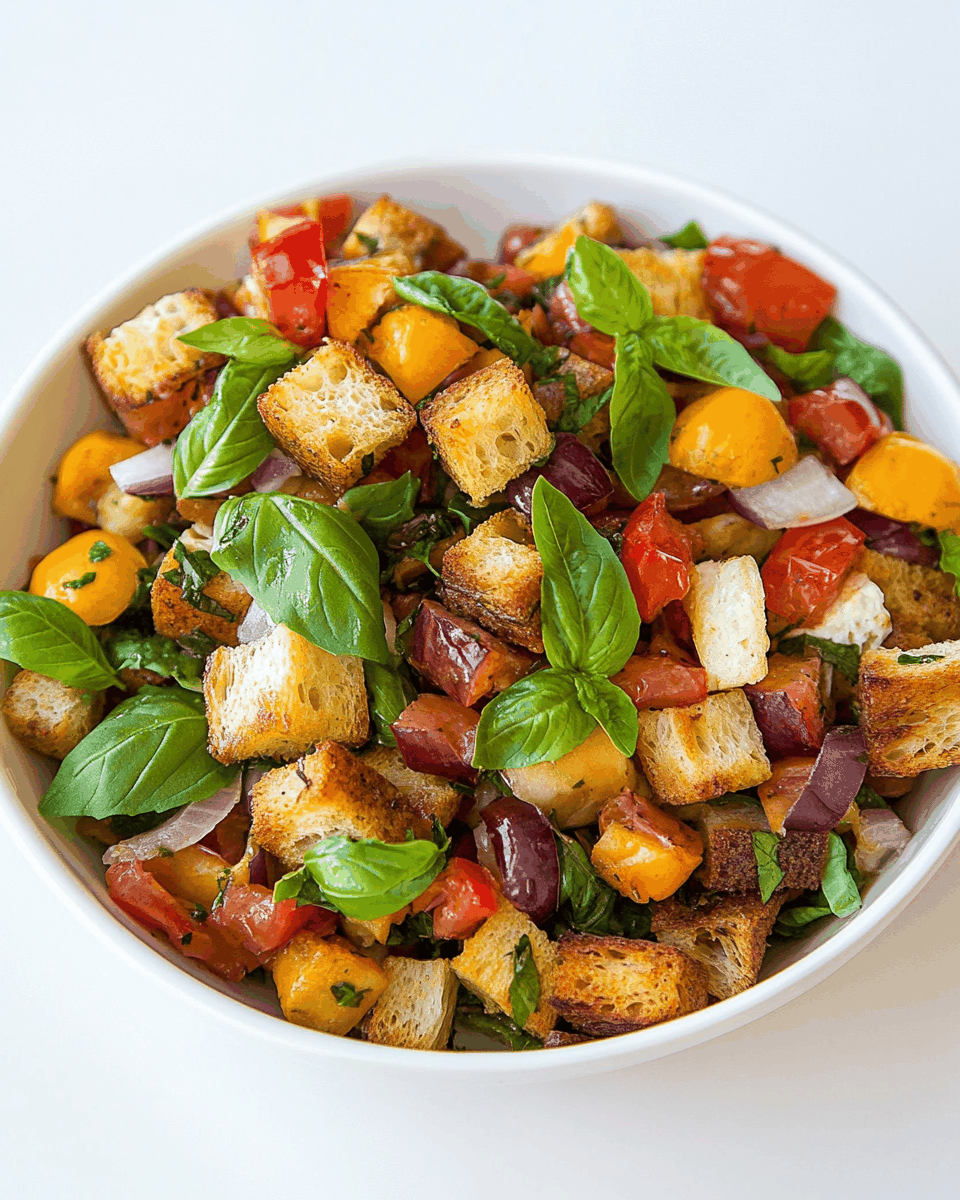
To create a delicious Panzanella, you will need the following ingredients, each contributing to the salad’s unique flavor and texture. Below is a comprehensive list with measurements and descriptions for each component.
– 4 cups of stale bread (preferably ciabatta or baguette), cut into bite-sized pieces: Stale bread is essential for Panzanella as it absorbs the juices from the tomatoes and dressing without becoming mushy. The crusty exterior adds a satisfying crunch.
– 4 ripe tomatoes (such as heirloom or beefsteak), diced: Fresh, juicy tomatoes are the star of this salad. Their sweetness and acidity create a wonderful base flavor.
– 1 cucumber, diced: A refreshing addition, cucumber adds a crisp texture and balances the richness of the bread.
– 1 red onion, thinly sliced: The sharpness of red onion provides a nice contrast and depth of flavor. Soaking the onion in water for a few minutes can help mellow its taste if desired.
– 1 bell pepper (any color), diced: Bell peppers add a sweet crunch and vibrant color to the dish.
– 1/4 cup fresh basil leaves, torn: Fresh basil lends a fragrant aroma and enhances the overall flavor profile of Panzanella.
– 1/4 cup extra virgin olive oil: A high-quality olive oil is crucial for dressing the salad, providing richness and depth.
– 2 tablespoons red wine vinegar: This tangy component adds acidity and brightness, elevating the flavors of the salad.
– Salt and pepper to taste: Essential for seasoning, these staples help bring out the flavors of the other ingredients.
– Optional: 1/4 cup of capers or olives for an added briny flavor: These ingredients can provide a salty note that complements the sweetness of the tomatoes.
– Optional: 1 avocado, diced for creaminess: If you want to add a touch of creaminess, diced avocado can enhance the texture and flavor of the salad.
– Optional: 1 cup of mozzarella balls or feta cheese for added richness: Cheese brings a creamy texture and adds another layer of flavor that can elevate the dish further.
Gathering these ingredients is the first step to creating a delightful Panzanella that will be both satisfying and refreshing.
How To Make Panzanella?
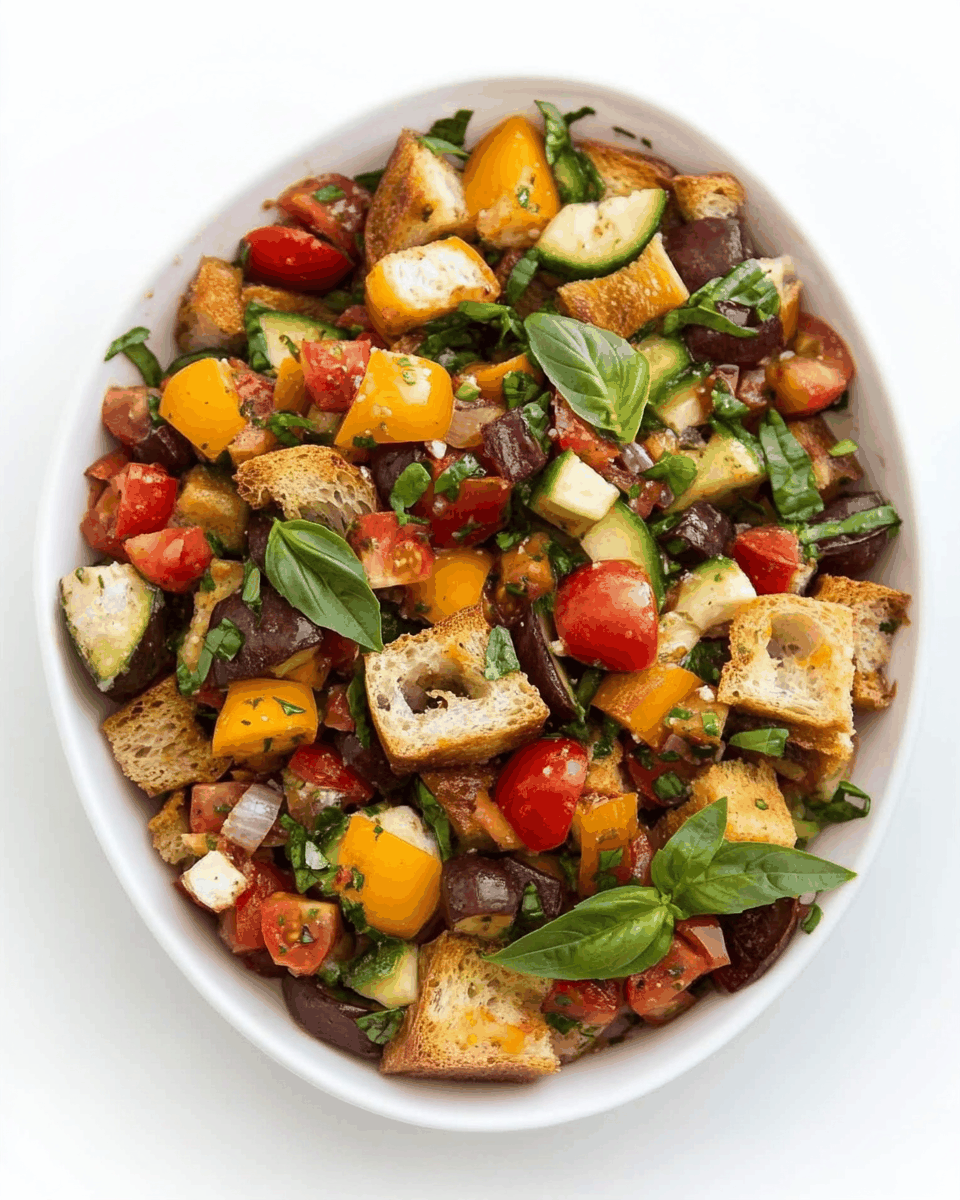
Creating Panzanella is a simple and enjoyable process that involves a few key steps. Follow this detailed guide to make a beautiful and delicious salad that will impress everyone at the table.
1. Start by preparing the bread. If you are using stale bread, tear it into bite-sized pieces, about 1 to 2 inches in size. If your bread is fresh, toast the pieces in a 400°F (200°C) oven for about 10 minutes or until they are golden brown and crispy. Let the bread cool completely before proceeding.
2. While the bread is cooling, prepare the vegetables. Dice the tomatoes, cucumber, bell pepper, and onion as described in the ingredients list. Place these chopped vegetables into a large mixing bowl.
3. If you prefer a milder onion flavor, soak the sliced red onion in a bowl of cold water for about 10 minutes. Drain and add to the mixing bowl with the other vegetables.
4. Add the torn basil leaves to the bowl, infusing the salad with a lovely herbaceous aroma.
5. In a separate small bowl, whisk together the extra virgin olive oil and red wine vinegar. Add salt and pepper to taste, ensuring the dressing is well balanced.
6. Pour the dressing over the bowl of vegetables and gently toss to combine, ensuring everything is evenly coated.
7. Now, add the prepared bread pieces to the mixing bowl. Gently fold the bread into the salad, allowing it to absorb the juices from the vegetables and dressing.
8. Let the salad sit for at least 15 minutes before serving. This resting time allows the bread to soak up the flavors from the vegetables and dressing, enhancing the overall taste.
9. Before serving, taste and adjust the seasoning, adding more salt, pepper, or vinegar as needed.
10. If you are using optional ingredients such as avocado or cheese, add them just before serving to maintain their freshness and texture.
11. Serve your Panzanella in a large bowl or on individual plates, garnishing with additional basil if desired. Enjoy this vibrant salad as a side or a light main course!
Tips For Variations:
Panzanella is a wonderfully versatile dish that can be customized to suit your taste preferences, dietary needs, or seasonal ingredients. Here are some unique substitution ideas to help you create your perfect version of this classic salad.
– Bread Options: While ciabatta and baguette are traditional choices, you can experiment with other types of bread. Sourdough adds a tangy flavor, while whole grain bread provides a nuttier taste. Gluten-free bread can also work well if needed.
– Seasonal Vegetables: Adjust the vegetables based on what is in season or what you have on hand. Zucchini, radishes, or asparagus can be great additions in the spring. In the fall, consider incorporating roasted butternut squash or sweet potatoes for a heartier version.
– Cheese Variations: If you want to add cheese, you can use mozzarella, feta, or goat cheese, each offering its distinct flavor and texture. For a creamier option, try a dollop of ricotta or burrata for an indulgent twist.
– Add Protein: To transform Panzanella into a more substantial meal, consider adding grilled chicken, shrimp, or chickpeas. These proteins can complement the salad while making it more filling.
– Vinaigrette Variations: While the classic olive oil and vinegar dressing is delicious, you can explore different flavor profiles by incorporating herbs, citrus juices, or even mustard for an extra kick. A lemon vinaigrette can brighten the flavors, while a balsamic reduction can add a touch of sweetness.
– Spice it Up: If you enjoy a bit of heat, consider adding sliced jalapeños or a sprinkle of red pepper flakes to the salad. This can add an exciting layer of flavor that balances well with the other ingredients.
– Herb Alternatives: While basil is traditional, feel free to substitute it with other fresh herbs such as parsley, mint, or cilantro. Each herb brings its unique flavor, allowing for a fresh twist on the classic recipe.
These variations allow you to personalize your Panzanella, making it a dish that suits your taste while keeping the spirit of the traditional recipe alive.
Serving Suggestions:
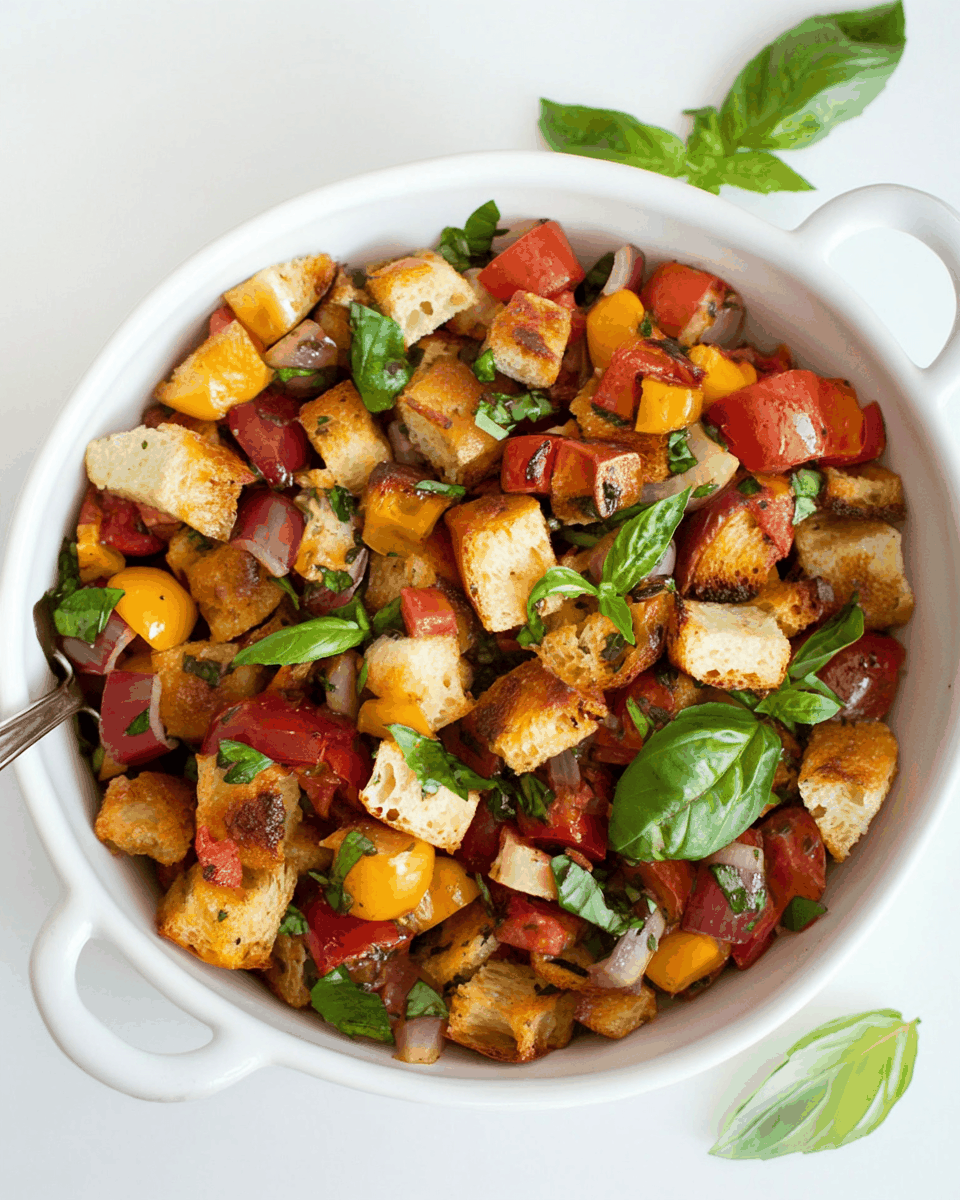
When it comes to serving Panzanella, there are many creative options to enhance the dining experience. Here are some suggestions that can elevate your salad and make it a memorable dish for any occasion.
– Serve it Family-Style: Present the Panzanella in a large, colorful bowl at the center of the table. This encourages sharing and creates a communal dining atmosphere, perfect for family gatherings or potluck events.
– Pair with Grilled Proteins: Panzanella makes an excellent accompaniment to grilled meats such as chicken, lamb, or fish. The freshness of the salad complements the smoky flavors of grilled dishes, creating a well-rounded meal.
– Create a Brunch Spread: For a lovely brunch option, serve Panzanella alongside an assortment of brunch favorites like frittatas, quiches, or a cheese platter. The salad adds a refreshing contrast to richer dishes.
– Use as a Filling: For a creative twist, consider using Panzanella as a filling for wraps or sandwiches. Simply layer the salad into a tortilla or between slices of bread for a delicious on-the-go meal.
– Incorporate into a Buffet: If hosting a buffet-style event, include Panzanella as part of a selection of salads. Its vibrant colors and fresh flavors will entice guests and encourage them to try a bit of everything.
– Serve with Crusty Bread: To enhance the rustic charm of Panzanella, consider serving it alongside a loaf of crusty bread or breadsticks. This allows guests to scoop up the salad with additional bread, enhancing the experience.
– Garnish Creatively: Before serving, consider garnishing the salad with additional herbs, edible flowers, or a drizzle of high-quality olive oil. This adds a finishing touch that elevates the presentation and makes it visually stunning.
By exploring these serving suggestions, you can ensure that your Panzanella not only tastes incredible but also looks beautiful on the table, making it a highlight of any meal.
FAQ:
Can I make Panzanella ahead of time?
Yes, you can prepare Panzanella ahead of time, but it’s best to wait to add the bread until just before serving. This prevents the bread from becoming too soggy. You can chop and mix the vegetables and dressing in advance and combine everything just before serving.
What type of bread is best for Panzanella?
Stale bread is ideal for Panzanella, with ciabatta or baguette being traditional choices. The bread should have a firm crust to absorb the dressing and juices without becoming mushy.
Can I add fruits to Panzanella?
Absolutely! Fruits like peaches, nectarines, or berries can add a delightful sweetness to Panzanella. Combine them with the tomatoes for a unique flavor experience that balances savory and sweet.
How do I store leftover Panzanella?
Leftover Panzanella can be stored in an airtight container in the refrigerator for up to two days. However, the bread may lose its texture, so it’s best enjoyed fresh.
Is Panzanella suitable for meal prep?
Panzanella can be a great option for meal prep, especially if you keep the bread separate from the vegetables until you’re ready to eat. This helps maintain the texture and freshness of the ingredients.

Panzanella Salad
Equipment
- Mixing Bowl
- Knife
- Cutting Board
Ingredients
Bread
- 4 cups stale bread (ciabatta or baguette), cut into bite-sized pieces Essential for absorbing juices without becoming mushy.
Vegetables
- 4 pieces ripe tomatoes (heirloom or beefsteak), diced Fresh and juicy, they create a wonderful base flavor.
- 1 piece cucumber, diced Adds a refreshing crisp texture.
- 1 piece red onion, thinly sliced Provides sharpness; soak in water to mellow if desired.
- 1 piece bell pepper, diced Adds sweetness and vibrant color.
- 1/4 cup fresh basil leaves, torn Lends a fragrant aroma.
Dressing
- 1/4 cup extra virgin olive oil Provides richness and depth.
- 2 tablespoons red wine vinegar Adds acidity and brightness.
Seasoning
- Salt and pepper to taste Essential for seasoning.
Optional Ingredients
- 1/4 cup capers or olives For added briny flavor.
- 1 piece avocado, diced For creaminess.
- 1 cup mozzarella balls or feta cheese For added richness.
Instructions
- 1. Prepare the bread by tearing it into bite-sized pieces. If using fresh bread, toast in a 400°F (200°C) oven for about 10 minutes until golden brown. Let cool.
- 2. Dice the tomatoes, cucumber, bell pepper, and onion. Place in a large mixing bowl.
- 3. Soak the sliced red onion in cold water for about 10 minutes if a milder flavor is desired. Drain and add to the bowl.
- 4. Add the torn basil leaves to the bowl.
- 5. In a small bowl, whisk together olive oil and red wine vinegar. Add salt and pepper to taste.
- 6. Pour the dressing over the vegetables and toss to combine.
- 7. Gently fold in the bread pieces, allowing them to absorb the juices.
- 8. Let the salad sit for at least 15 minutes before serving.
- 9. Adjust seasoning before serving, adding optional ingredients if desired.
- 10. Serve in a large bowl or on individual plates, garnished with additional basil if desired.





